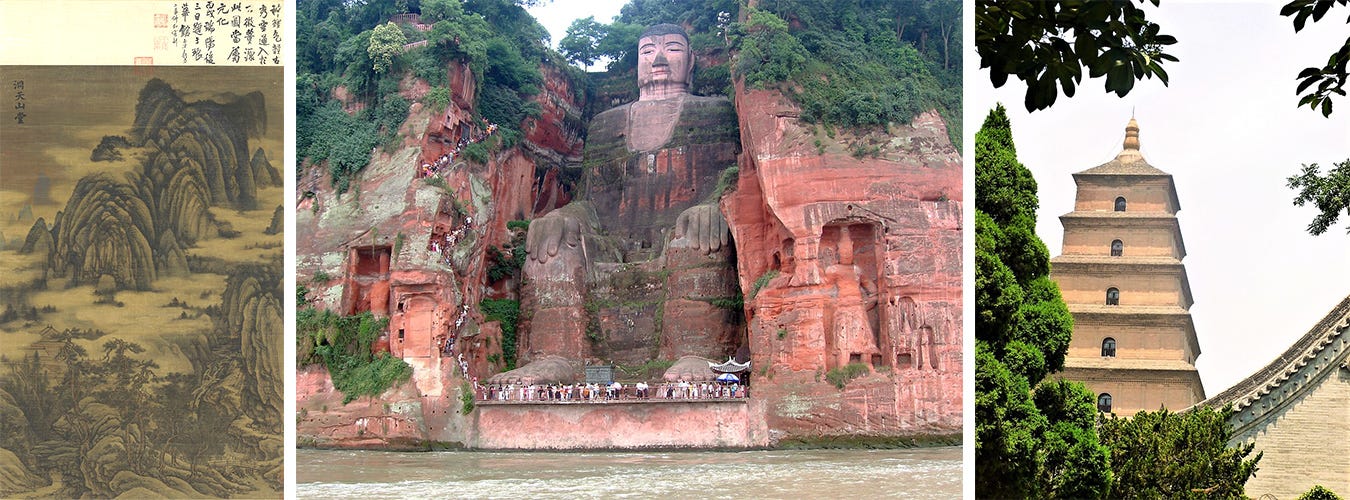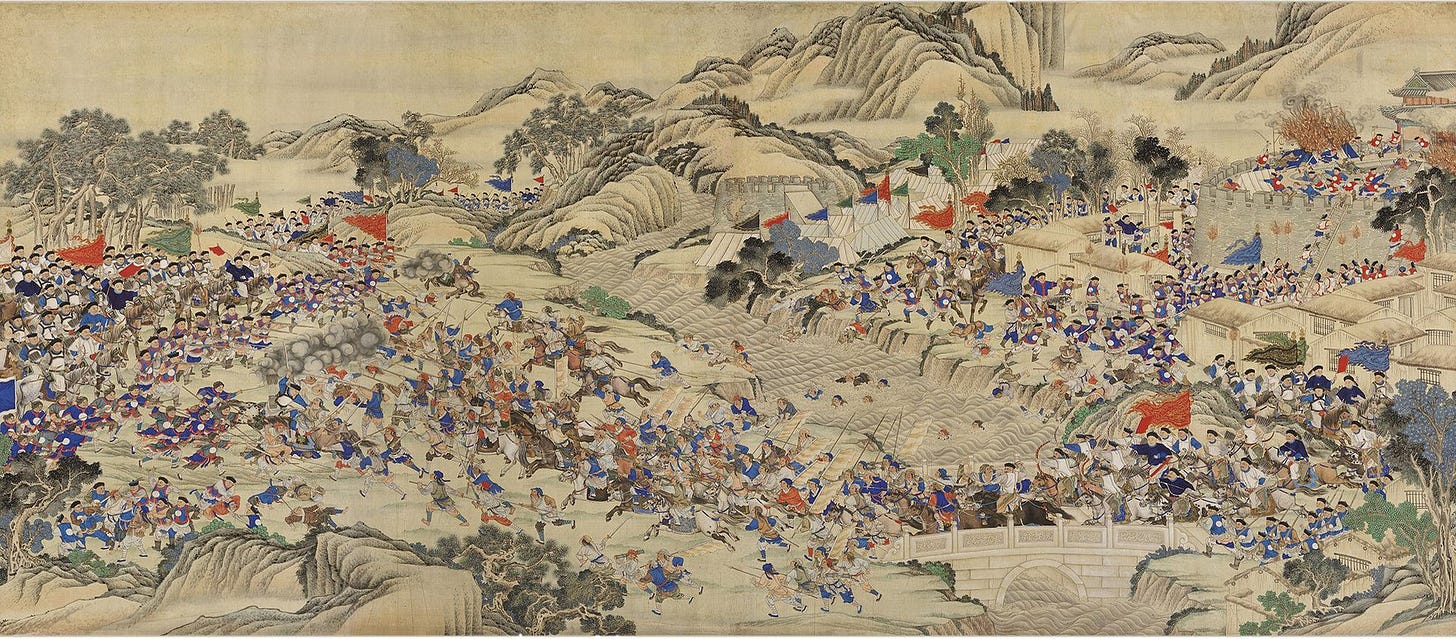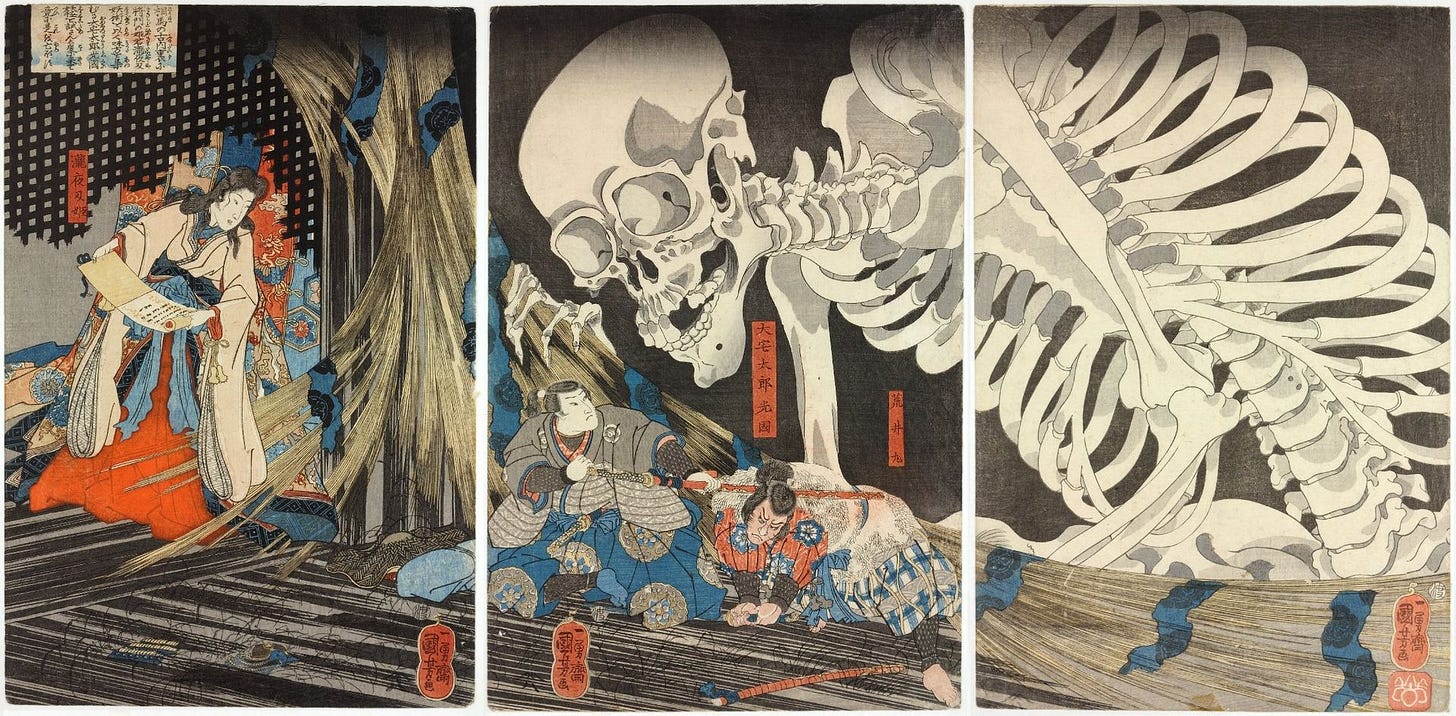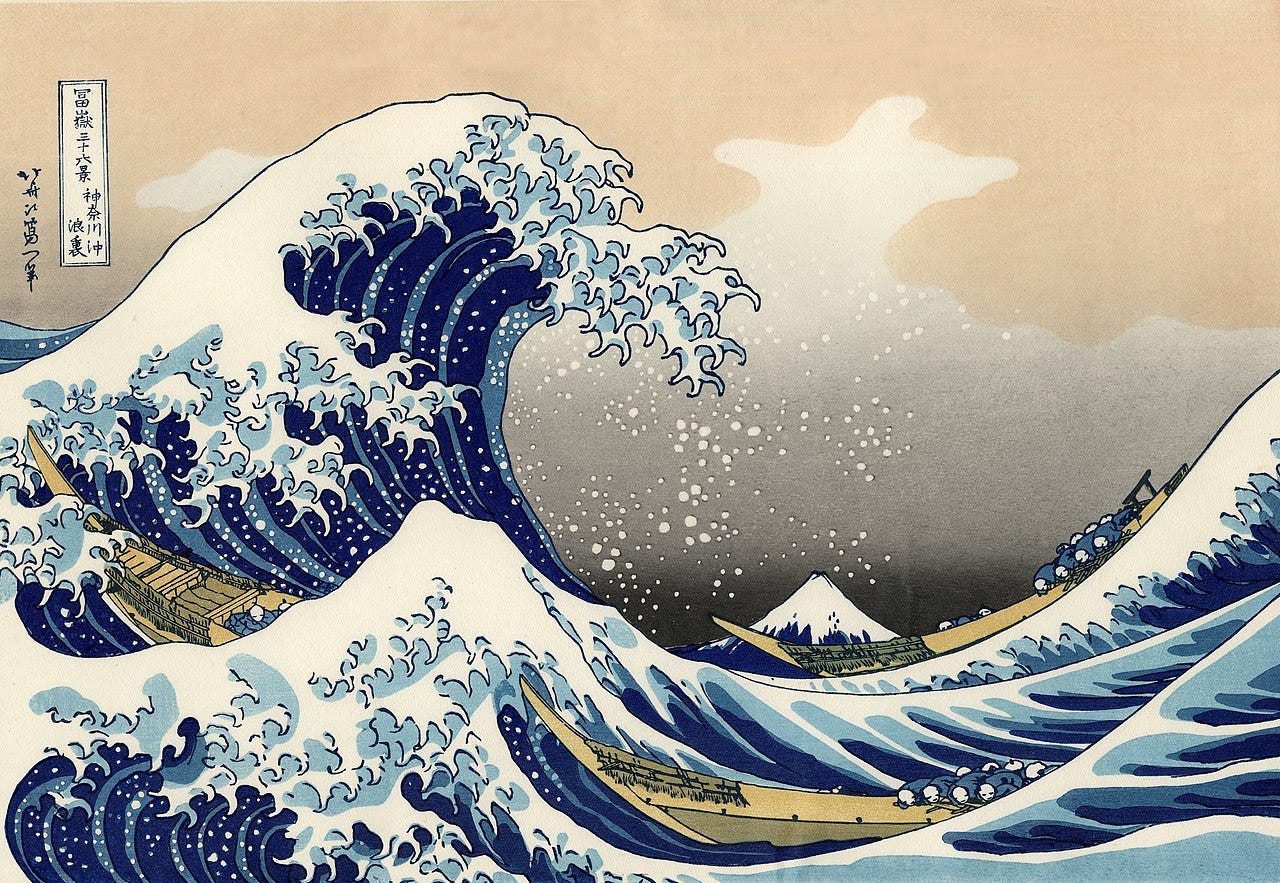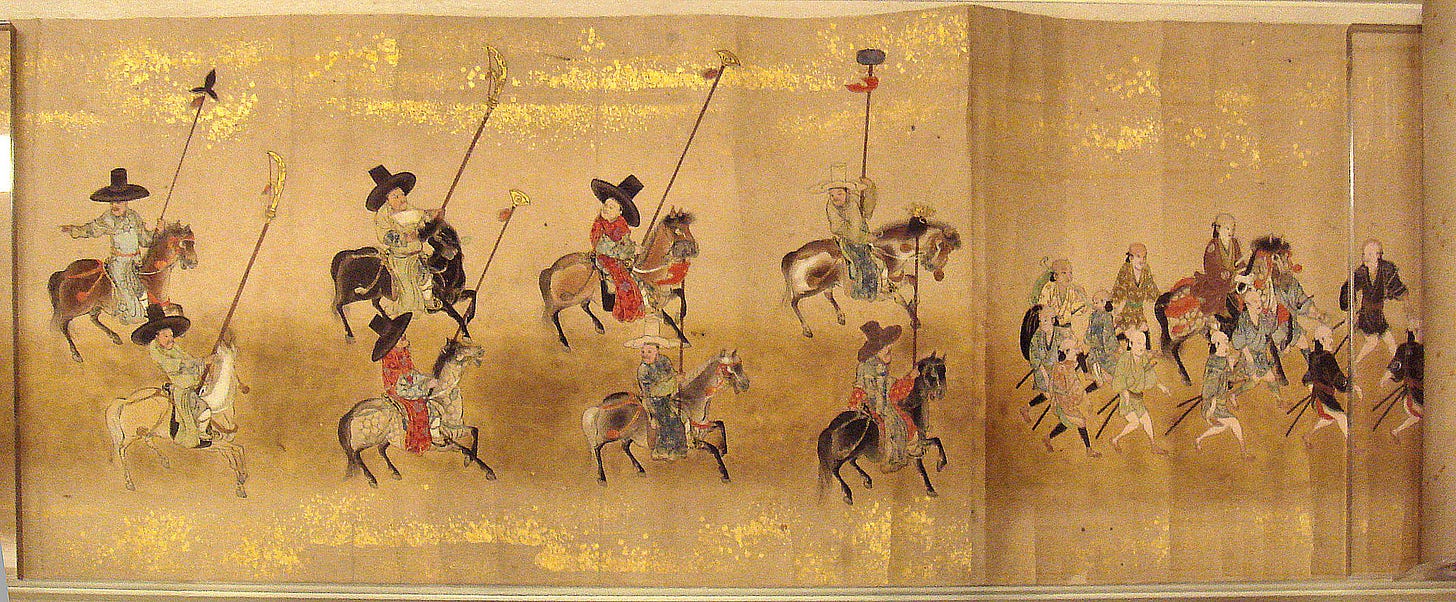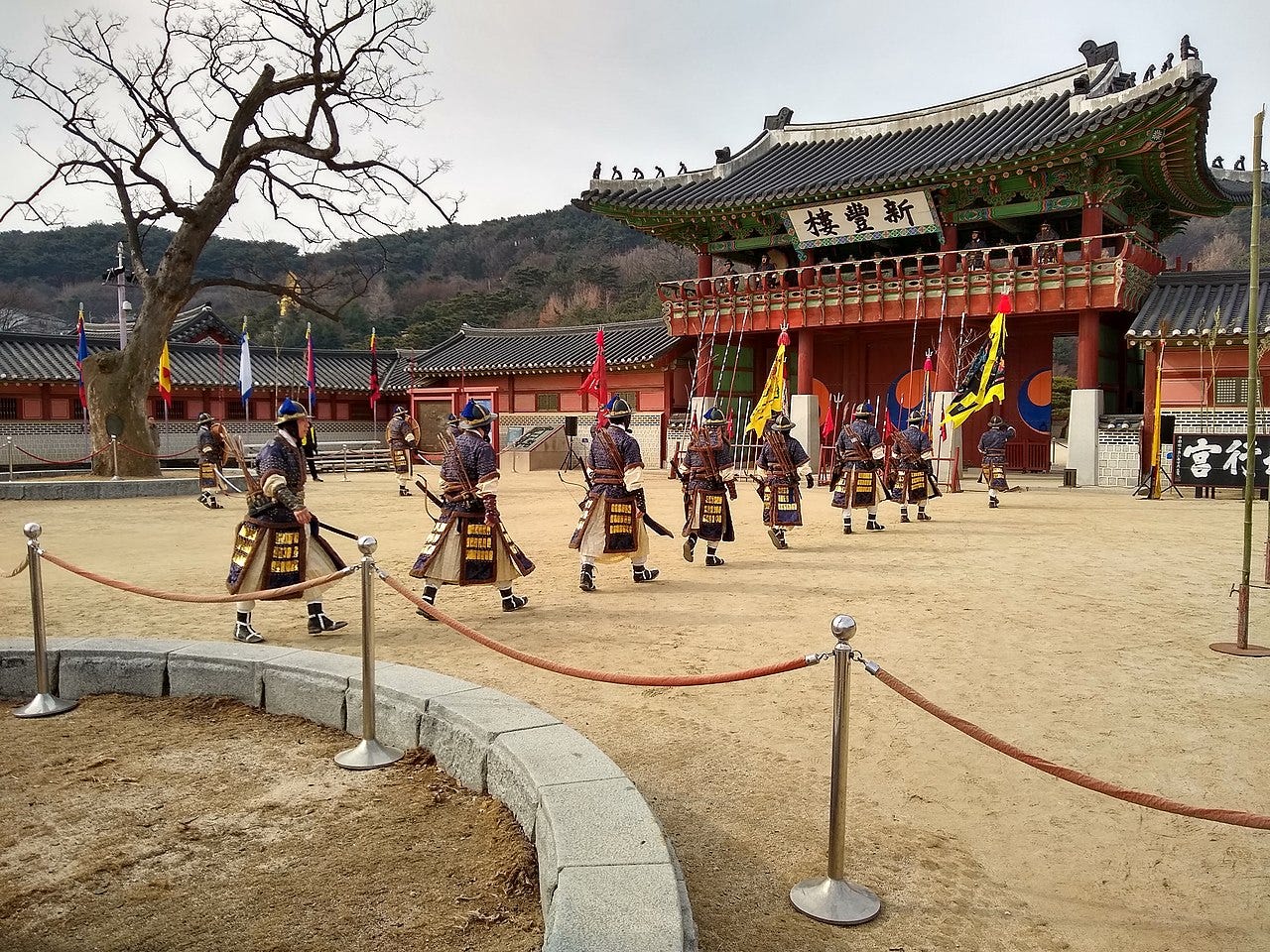Introduction to East Asian art: Art History 101
The early art of China, Japan, and Korea
Asia is a vast region and home to many different cultures. We previously covered some of the Near East (Mesopotamia, Greek Anatolia, etc) and here we’ll cover some of the Far East (China, Japan, etc). As with the other introductory articles, this is a brief overview to contextualize important artistic and historical events. We’ll have deeper dives in the future for those who want more than an initial exposure.
Let’s begin with the oldest:
China
The world’s oldest pottery (from what we’ve discovered so far in Xianren Cave) dates back to around 18,000 BC. Agriculture (the Neolithic Revolution) began around 7000-6000 BC, primarily centered around the Yangtze and Yellow rivers. Even though agriculture had been in Mesopotamia for thousands of years, it’s believed that Chinese civilization arose independently of them, and they figured out farming on their own.
Early cultures included those of the Peiligang (7000-5000 BC), Yangshao (5000-3000 BC), Liangzhu (3300-2300 BC), Majiayao (3300-2000 BC), and Longshan (3000-1900 BC).
China’s alleged first dynasty, the Xia dynasty (approx 2205-1600 BC), is credited with beginning the Chinese Bronze Age. This has overlap with the Erlitou period (1900-1500 BC) and inventing the wheel. Ancient bronze work is particularly notable for its high level of detail.
The Shang dynasty (1600-1045 BC) is the first dynasty with supporting archeological evidence for its existence. Based in the Yellow River valley, this was one of the first major civilizations of Asia. They worked with clay, bronze, jade, bone, and other materials for both artistic works and weapons of war. The earliest Chinese writing dates back to 1250 BC, shortly before the appearance of chariots (possibly from Indo-European cultures).
The Shang were followed by the Zhou dynasty (1046-256 BC), one of the longest-lasting. This time was notable for the “Mandate of Heaven,” a feudal system, increased bureaucracy and writing, Confucius, and Taoism. Crossbows were in use by 600-341 BC, such as in the Battle of Maling.
Men aimed for excellence in the “Four Arts” (qin, chess, calligraphy, painting) or “Six Arts” (math, calligraphy, literature, horsemanship, archery, music, and religious rites).
The legendary Warring States period (approximately 475-221 BC) led to the first unified Chinese empire. The Qin dynasty only lasted 15 years before giving way to The Eighteen Kingdoms and soon a Han dynasty, but you can do a lot in a short time. The Qin armies of terracotta warriors are among the world’s most famous works, created around 246-201 BC.
Buddhism reached China during the transition from BC to AD, radically altering world art and culture. Buddha statues have been found as far away as Greece.
Woodblock printing became common soon after, around 200 AD, and this is also when we see a clear “Chinese style” in painting. Most people can easily point out Chinese and Japanese art because of the distinctive colors, shapes, techniques, and methods of portraying people. It remained more or less consistent for thousands of years.
The Three Kingdoms era (220-280 AD) was one of China’s bloodiest, and impactful enough to influence culture up to the present day, including the long-running video game series Dynasty Warriors. The Romance of the Three Kingdoms by Luo Guanzhong (14th century) is an epic semi-historical story based on this period, still relevant, and one of China’s most famous literary classics. (For an English translation, most people seem to recommend the Moss Roberts translation.)
Also see: the 1592 book Journey To The West, more mythology-based and the origin for popular characters like the Monkey King.
The Three Kingdoms era was followed by turbulent times, including the Sixteen Kingdoms of Northern China. Art continued to evolve under successive dynasties: the Sui and Tang dynasties (581-960). Calligraphy-like landscape painting became popular.
The Song and Yuan dynasties (960-1368) largely covered the Medieval era. Like Medieval Europe, the Black Plague swept through and killed millions of people.
At this point, European and Chinese cross-cultural contact was significant, via the Silk Road. Marco Polo for example is well-known for his 1271-1295 travels and things only increased from there.
The famous Great Wall of China was built in small sections over centuries of activity. The wall as we know it today was largely constructed under the Ming dynasty (1368-1644). Urbanization and specialized industry increased under The Hongwu Emperor, and Neo-Confucianism became popular.
Fun fact: the Ming had one of the largest navies in the world at the time. The Chinese could’ve launched their own Age of Discovery and theoretically colonized the Americas before Europe. And yet—they burned over 3,000 vessels, deeming sea voyages “wasteful.”
The Qing dynasty was China’s final imperial dynasty, lasting from 1644 to 1912. Major events included the First Opium War (1840, Treaty of Nanking (1842), Taiping Rebellion (1851-1864), and other conflicts. The dynasty eventually fell and the Republic of China was established in January 1912.
Like in the West, there came a push toward modernization. Chinese artists didn’t exactly head toward Impressionism and Post-Impressionism like Europe, yet their art did change, inspired by both past and present.
Japan
Japan was once linked to the Chinese mainland by a narrow strip of land. There’s some evidence that humans discovered this route by at least 30,000 BC, although they didn’t leave much behind. Mostly a few stone tools.
Between 14,500 and 10,700 BC, we see initial developments of pottery. When sea levels rose 10,000 years ago (also see: Younger Dryas) the Japanese archipelago was largely cut off from the rest of Asia. This naturally led to a clear split in cultural development compared to other regions.
The first major culture was that of the Jōmon hunter-gatherers. As they spread out, regional differences appeared, although they’re still considered a unified culture until 500-300 BC. Archery was in use by this Jōmon period, with unique longbows becoming the standard later (between 300 BC and 300 AD). After 500-300 BC, there was the Yayoi period. The early Japanese people began to use agriculture (from Korea) and developed a complex society.
Even at this early time, art was intricate.
The Kofun period (300-710 AD) was the final phase of Japanese prehistory, characterized by major changes like the introduction of Buddhism and Chinese writing. They later adapted Chinese script to form what would eventually become “Classical Japanese” (Medieval Japanese), a literary form which still exists today (albeit much diminished in use, especially after World War II). The Kofun period includes Asuka and Nara art.
The megalithic Mozu Tombs (and Tomb of Emperor Nintoku) are one of their biggest achievements, somewhat like the North American mound-building cultures. The keyhole shape is rare and unique; I don’t know of any other culture who did this.
Japanese civilization rapidly evolved. Many of their distinctive styles have their origins in the time soon after Buddhism was introduced to the island chain. Woodblock printing was also introduced in the 700s.
In 794 AD, the budding country’s capital was moved to Heian-kyō (Kyoto) and the resulting “Heian period,” which was largely stable and peaceful, spanned 794-1185 AD.
Peace never lasts forever, though. War broke out at the end of the Heian period. The victors, the Minamoto clan, moved the seat of power to Kamakura, where it remained until 1333. This also shifted power to the warrior classes and away from the traditional nobles, which in turn influenced what artists created.
And warriors could be artists too:
The Kamakura era ended when the Ashikaga clan took over and returned the capital to Kyoto. Since the Ashikaga headquarters ended up in the Muromachi district of the city, this era (1338-1573) is known as the Muromachi era of art, followed by the Azuchi-Momoyama period (1573-1603). Zen was one of the popular themes; but the Japanese also went big, for example Himeji Castle, the largest castle in the country (below).
The Sengoku period, or “Warring States” period, began in 1467 with the Ōnin War. Social unrest, including civil war, lasted for over a century. The end of the Sengoku is debated but can be dated to 1603, for ease of reading, when Tokugawa Ieyasu established his Shogunate and the resulting Edo period (1603-1867).
Ukiyo-e art and Kabuki theater emerged in this time.
Side note: my personal interest in this era began as a kid after randomly discovering the PS2 RTT Kessen many years ago.
Japan was exposed to Europeans after they began the Age of Discovery in the 1500s, initially from shipwrecked Spanish sailors. Jesuits began attempting to convert Japan in 1549 and “Bernardo the Japanese” is thought to have been the first Japanese person to set foot on European soil in 1553. One early ambassador was daimyō Hasekura Tsunenaga, who visited both Spain and the Americas between 1613 and 1620.
Western powers tried to move in on Japan without as much success as they wanted. In 1854, Commodore Matthew Perry’s visit led to the controversial Treaty of Kanagawa. This opened the country to more Western influence, rapid cultural changes, a new system of government, and significant conflict. This included the Boshin War (1868-1869) and Satsuma Rebellion (1877).
Japan’s final phase of independent culture ended with the upheaval of this Meiji era (1868-1912) where Western culture clashed with–and was integrated with–traditional Japanese ideas. This has been a popular topic in contemporary media such as Rurouni Kenshin and The Last Samurai.
Korea
Early Korean history is a bit less eventful than China and Japan, yet remains notable in its own ways.
Korean pottery began to be made around 7,000 BC, in relatively simple and primitive styles compared to the earliest Chinese and Japanese cultures. Their bronze age began around 2,000 BC, about a thousand years after it began in the Mediterranean, marked by megalithic dolmens.
The Korean peninsula had its own “Three Kingdoms” period, which began in 57 BC as the Goguryeo, Baekje, and Silla kingdoms competed for control.
Buddhism was introduced around 372 AD. Like in China and Japan, it had a large influence on art and culture. Images of Buddha are frequent. The southernmost kingdom at the time, the Silla Kingdom, was the last to adopt Buddhism.
The Joseon dynasty (1392-1910) was Korea’s long-lasting “classical” era and encompassed the entire peninsula. Science, literature, art, culture, and technology flourished. Confucianism began to influence the arts alongside Buddhism. It was eventually the official state ideology and Buddhism was discouraged.
The Korean alphabet (Hangul) was invented in 1443, an easier-to-learn writing system aimed at improving literacy rates.
Korea became increasingly isolated after invasions from both Japan and China, becoming the first country referred to as a “hermit kingdom.”
The Joseon dynasty eventually crumbled. Its last king (and later Emperor) was forced to sign unfavorable treaties, namely the 1876 Treaty of Ganghwa and 1905 Japan-Korea treaty. Korea was plagued with pressure from foreign nations, famine, warfare, internal revolts, a failed coup d'état, assassinations, and more. It was too much for a kingdom to bear, and they were annexed by Japan in 1910.
Korea was ruled by the Japanese Empire until the end of World War II in 1945. After Japan’s surrender, Korea was divided into two occupation zones, one American and one Soviet. The Korean War of 1950 devastated the peninsula, with almost all major cities—and millions of people—destroyed. Thus today we have both North Korea and South Korea, which now have very significant cultural differences.
This is a reader-supported publication. For further support of my work:
I sell physical artwork and journals at ApolloGallery.org with more to come
I have a masterlist of 100+ AI-related tools for increasing efficiency
You can hire me for graphic design work








